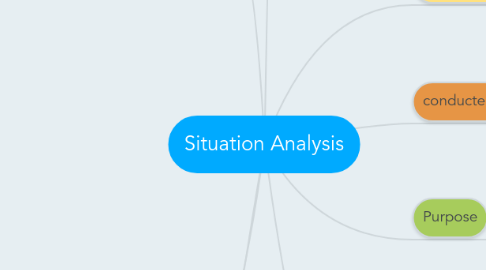
1. Sources of data
1.1. Formal investigation of context, relevant data sources are consulted and data collection is applied.
1.2. Obtain data from international trends that influence a particular curriculum.
1.3. World health Organization statistical data and publications.
1.4. Statistical reports and publications.
1.5. National Departments of health publications
2. Required data and information
2.1. External factors
2.1.1. Community issues
2.1.1.1. Constitutional environment
2.1.1.1.1. Social and politico-economic ideology
2.1.1.1.2. Authorities responsible for health education
2.1.1.1.3. Educational structures
2.1.1.1.4. Health sciences education relations
2.1.1.1.5. Health care delivery structures
2.1.1.2. Statutory environment
2.1.1.2.1. Educational legislation and policies
2.1.1.2.2. Health care legislation and policies
2.1.1.2.3. Statutory control
2.1.1.3. Political environment
2.1.1.3.1. Political forces and people with influence the community.
2.1.1.4. Economic environment
2.1.1.4.1. International trends
2.1.1.4.2. Economic realities in your country
2.1.1.4.3. Health care economics
2.1.1.5. Technological environment
2.1.1.5.1. Technical literacy must be included in te curriculum.
2.1.1.5.2. Influence disease patterns
2.1.1.5.3. Bring new ethical dilemmas
2.1.1.5.4. International technological advances
2.1.1.5.5. National technical advances
2.1.1.6. Demographic trends
2.1.1.6.1. Population patterns
2.1.1.6.2. Health care trends
2.1.2. Learner issues
2.1.3. Subject discipline
2.2. Internal factors
2.2.1. Educational ethos
2.2.1.1. Determines type of educational programme and the educational activities in the institution.
2.2.1.2. Vision, mission and educational philosophy.
2.2.2. Learner issues
2.2.2.1. Investigation of the learner profile.
2.2.3. Resources
2.2.3.1. Material resources
2.2.3.2. Human resources
2.2.3.2.1. Investigation of educator profile.
3. Interpreting findings
3.1. Systematic analysis and synthesis to determine which patterns are revealed.
3.2. SWOT analysis
3.2.1. Strengths
3.2.2. Weaknesses
3.2.3. Opportunities
3.2.4. Threats.
4. Definition of situation analysis
4.1. conducted before a curriculum is designed
4.2. its a systematic scientific process that entails data collection, involves analysis of collected data, involves current and future trends, entails making judgments about the context of the curriculum.
5. conducted
5.1. Its conducted during the first curriculum development stage, namely the exploratory
6. Purpose
6.1. its to provide the necessary data and information which committees use to respond to social realities and changes.
6.2. Determine health care realities, tendencies and needs that influence curriculum and make projections about future health care realities.
7. Determinants of curriculum
7.1. Community
7.1.1. Values, needs, issues and demands within the community, those that will will ultimately be served by the graduates.
7.1.2. Cultural realities and tendencies that influence the curriculum.
7.1.3. To prepare learners to practice a specific profession.
7.2. Subject Discipline
7.2.1. Analysis of the didactic demands that are placed on a curriculum
7.2.2. Exploration of the subject disciplines
7.2.3. Investigates latest tendencies and intellectual demands.
7.3. Characterized by scientific and technological explosion.
7.4. Learner
7.4.1. Learners needs and demands are important determinants of the curriculum.
7.4.2. Refers to nature, educational needs and demands.
7.4.3. Different views that will influence decisions of which learning theories underpin curriculum development.
8. Data Gathering techniques
8.1. Document analysis
8.1.1. Data can be found in existing reports and publications.
8.1.2. We obtain data we require from existing publications.
8.2. Questionnaires or conducting interviews
8.2.1. Sending out questionaires
8.2.1.1. gather quantifiable data
8.2.1.2. Gather qualitative data.
8.2.2. Conducting interviews
8.2.2.1. participant answers questions of the interviewer
8.2.3. Public forum and brainstorming sessions
8.2.3.1. Members of the general public are given a chance to voice out their opinions
8.2.3.2. Raises needs that are passed over by formal methods.
8.2.4. Observation
8.2.4.1. Functions health care professionals perform.
8.2.4.2. Data is used to identify competencies.
8.2.4.3. Competencies are used to develop curriculum outcomes.
